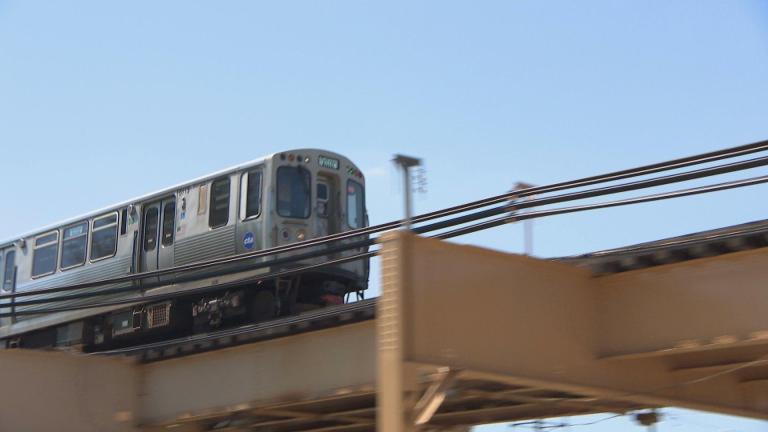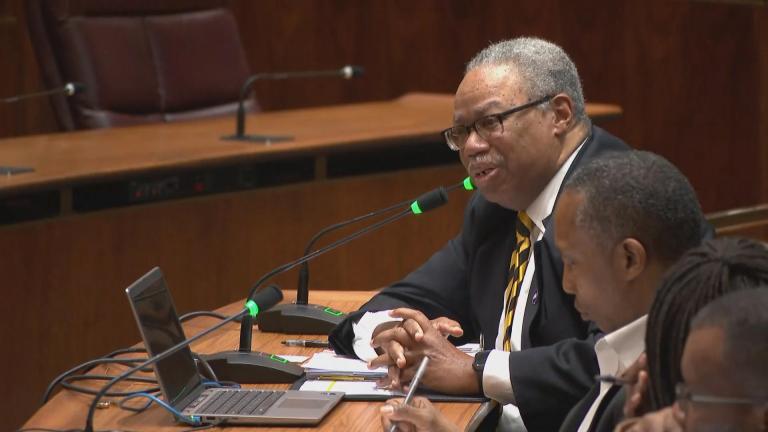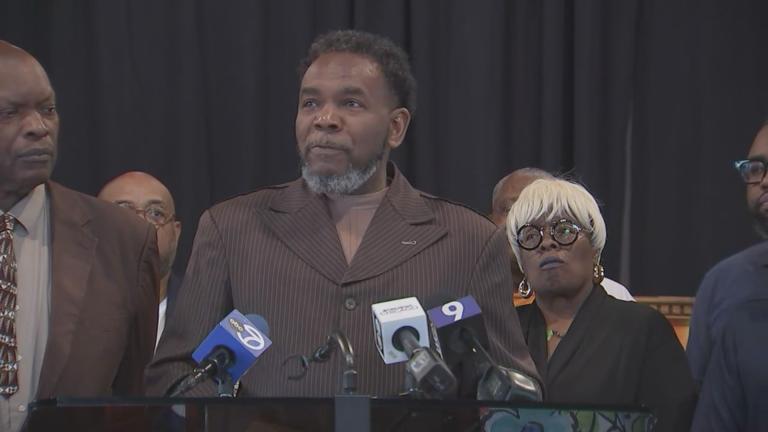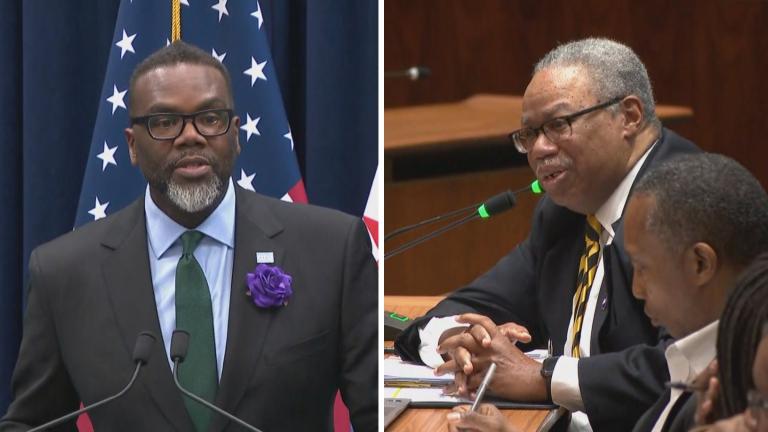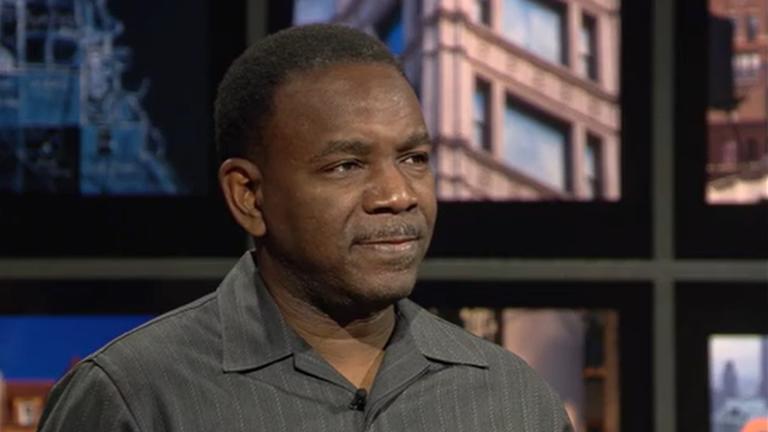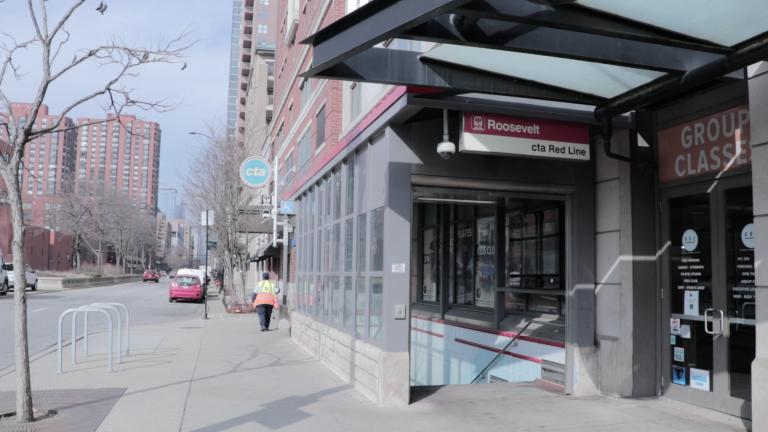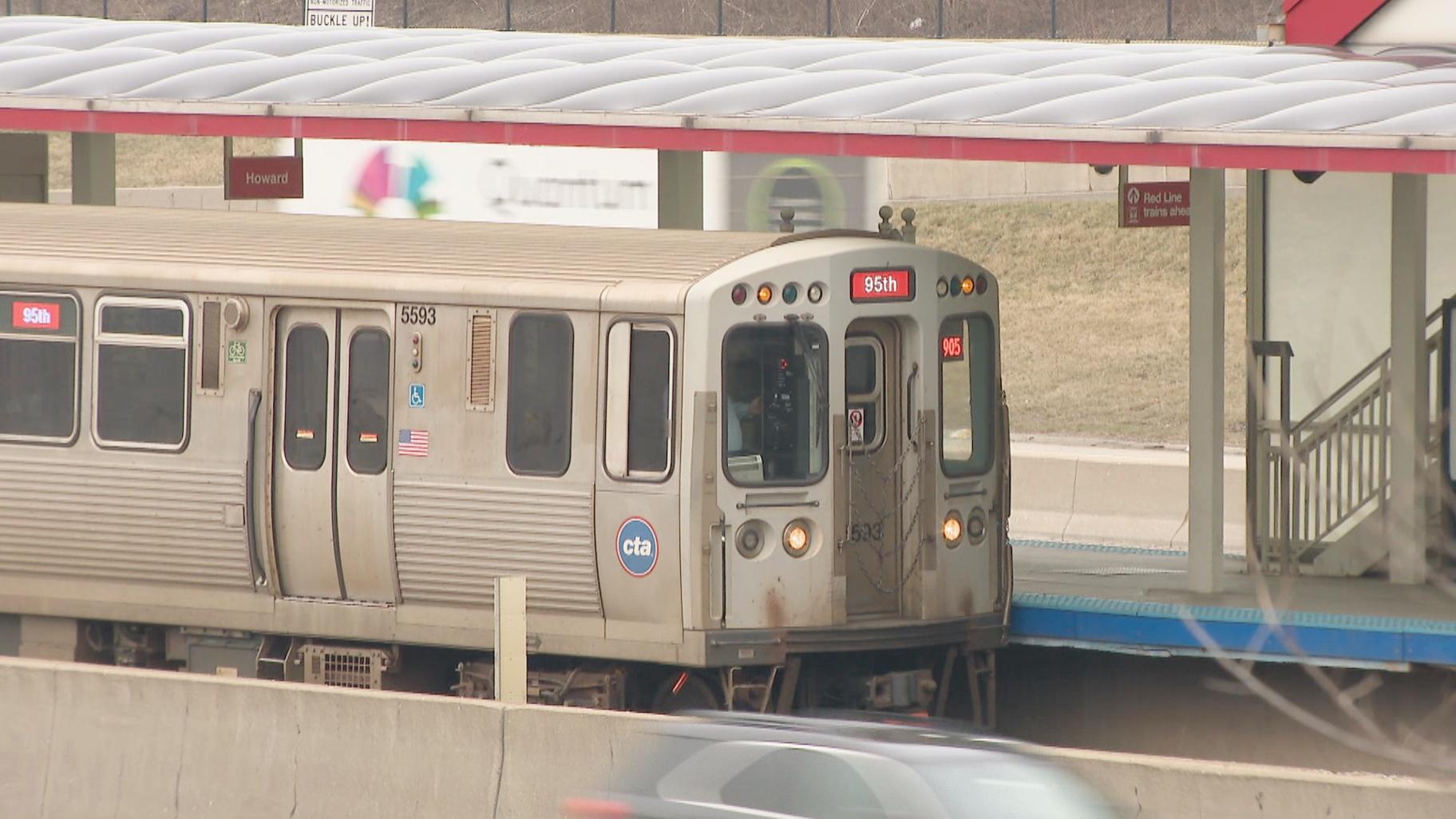 A southbound CTA Red Line train is pictured in a file photo. (WTTW News)
A southbound CTA Red Line train is pictured in a file photo. (WTTW News)
President Joe Biden’s proposed budget for 2024 includes $350 million that would finally get the extension of the CTA’s Red Line from 95th Street to the city’s southern border near 130th Street off the drawing board.
The inclusion of federal funds for the long-stalled rail line extension in Biden’s proposed budget comes several months after Mayor Lori Lightfoot created a new tax-increment financing district along the southern branch of the CTA Red Line to generate $959 million for the project first proposed by former Mayor Richard J. Daley in the 1950s.
Even if the federal grant is approved by Congress, Chicago would need an additional $2.4 billion to cover the total cost of the project, much of which city officials hope will come from the federal government in future years.
U.S. Rep. Mike Quigley, D-Chicago, celebrated the project’s inclusion in the president’s budget and called it a “postive step” toward building 5.6 miles of new train tracks as well as four stations.
U.S. Sens. Dick Durbin, D-Illinois, and Tammy Duckworth, D-Illinois, said they would work to ensure the project is included in the budget approved by the U.S. House and Senate and signed into law by the president.
“This transformative project will provide long-awaited relief for the South Side community,” Durbin said in a statement.
CTA President Dorval Carter has said extension will benefit the entire city — not just the Far South Side — by allowing people to get to work in the Loop 30 minutes faster while reducing carbon emissions from cars.
“This funding is vital in ensuring this transformative project continues on its path toward reality,” Carter said in a statement released by Durbin and Duckworth's offices
The project would be the largest in the history of the CTA, and would create 6,000 jobs — earning the support of the politically powerful Chicago Federation of Labor.
The city would cover its share of the bill for the project by funneling a portion of the increase in property tax revenues for the next 35 years from the 42nd, 3rd, 4th, 11th and 25th wards — even though the extension of the train line would be miles away from any of those wards.
The Red Line South tax-increment financing district is Chicago’s second Transit Tax Increment Financing District. The first Transit TIF was created in 2017 to fund the reconstruction of the Red, Purple and Brown lines on the North Side with little controversy. That work is underway now.
The city’s use of TIF districts has fueled a perennial argument over whether the districts, which capture all growth in the property tax base in a designated area for 23 years, actually spur redevelopment and eradicate blight or serve to exacerbate growing inequality in Chicago. The proposed TIF to fund the extension of the Red Line would not reduce funding to the Chicago Public Schools.
Typically, the funds generated by TIF must be used in the same area of the city that the taxes were generated. But the TIF proposed by Lightfoot would use the growth concentrated downtown and south of the Loop to fund the train line extension on the Far South Side, where property tax revenue has been stagnant or declining for many years — a reminder of the legacy left by modern segregation.
Contact Heather Cherone: @HeatherCherone | (773) 569-1863 | [email protected]

